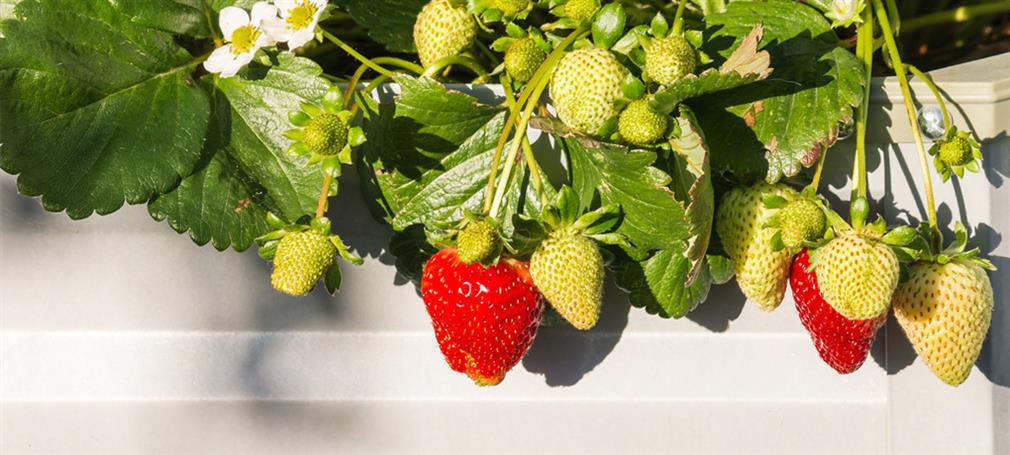Plantas para a estufa

Gostamos de salientar que sabemos muito sobre os nossos produtos - estufas em diferentes tamanhos e materiais, mas NÃO somos especialistas quando se trata de todas as diversas plantas que se podem cultivar no interior de uma estufa. O céu é o limite quando se trata de plantas que se pode ter no interior de uma estufa.
Como o número de plantas diferentes no mundo ascende a quase 400.000, não lhe diremos quais as plantas a selecionar quando nos encomendar uma estufa. Depende de tantas coisas - do que gosta, quer cultivar a sua comida, ter flores bonitas, está a iniciar um negócio onde quer produzir sementes para vender a partir da próxima estação ou mais? Recomendamos-lhe que planeie lendo livros, consultando a Internet, conversando com outras pessoas que tenham tido o prazer de uma estufa e conversando com o pessoal do seu centro de plantas local. E arranje espaço para experimentar um pouco - selecione algumas plantas e veja como elas se transformam. Um dos prazeres de ter uma estufa é ter um pouco mais de sabedoria de estação em estação, pois vai descobrir algo novo a todo o momento. O tempo também vai desempenhar um papel, portanto experimente - vai ser divertido.
Ao selecionar as plantas para a estufa, também é necessário considerar onde vai colocar as plantas - diretamente no solo no interior da estufa, em canteiros elevados de jardim, ou dentro de um canteiro de plantas com uma caixa de irrigação automática. Pode selecionar plantas resistentes que podem crescer em quase qualquer lado ou plantas mais delicadas que necessitem de um ambiente bem protegido. Independentemente do tipo de plantas que escolher, oferecemos uma vasta gama de acessórios de estufa para o ajudar a tratar as plantas com o melhor resultado possível.
Algumas ideias para o ajudar a começar
Ervas
A few herbs that may be too sensitive to be outside in the garden – always great to have edible plants at hand. Basil, cilantro, oregano, parsley, thyme, and mint. Simply in small pots for easy handling.
Legumes
Vegetables are some of the plants that make the most sense to most greenhouse owners as they are relatively easy to grow and will produce lots of produce under the right conditions. May we suggest tomatoes, lettuce, peppers, broccoli, carrots, cucumbers, cabbage, peas, chillies, and more. Again, here you can have so many different kinds of various vegetables – tomatoes come in many different shapes, size and taste like cherry tomatoes, green tomatoes, beefsteak tomatoes, plum tomatoes, and many more. It is a great feeling to serve a delicious and fresh salad just harvested from the greenhouse.
Frutos
Many of the fruit we grow in greenhouses are the fruit that usually grows outside in the garden in Southern Europe and other places with a warm climate. You can have lemons, grapes, oranges, peaches, figs, and different kinds of berries. Eat the berries fresh or use them for jam and marmalades. Many things can be frozen or preserved so you can enjoy the produce all year round.
Flores
If you are a garden owner, you may already know that you can have different kinds of flowers – some which will only last the summer and some that last for much longer – the annuals, perennials and the biennials. Some can start inside the greenhouse in the early spring and move outside later, and some will only thrive inside the greenhouse. Here you can see the three types and the pros et cons of the different kinds of flowers:
Anuais
Some plants grow, bloom and die within a single year – it is flowers like gerberas, marigolds and impatiens, among many others. That means that you, in general, will have to replace the plants next year. These plants are easy and do not require much nursing. A great advantage is that annuals blossom all season long, much longer than perennials and biennials. Some annuals are self-seeding, which means they could potentially drop seeds that will flower the following year – sometimes by themselves, sometimes you need to collect the seeds and plant them the next season.
Perenes
Perennials like alstroemeria and peonies will generally last three seasons or more, making them a longer commitment than annuals. However, perennials are perfect if you want to create a garden where you do not plan each new garden season anew. On the downside, perennials have a shorter flowering season than annuals. However, your plant's exact period of flowering or being in bloom depends a little on the specific plant and how well you maintain your garden and the overall climate. You will generally plant perennials in the late summer or fall when you can put bulbs or seeds in the ground or pots and containers. Are you starting with young seedlings? Then it would help if you began in the spring.
Bienais
Two well-known and common biennials are poppies and foxglove. These plants will typically last two years before dying, and usually, you will see more blossoms during the second year. Like the self-seeding annuals, biennials are also known for dropping seeds, which bloom two seasons later. So, if you want your biennials to flower every year, you should plant them two years in a row – that way, you can enjoy the flowers each year. Here are some of the most popular and common biennials – petunias, geraniums, impatiens, salvia, roses, and violets.
Plantas exóticas
As mentioned, there are more than 400.000 different plants, so you can easily find plants that are not so common – either at your local plant market or on the internet. Your greenhouse will look beautiful and exotic if you also have some of these plants – cacti, succulents, and bamboo.
- Falar com um especialista 308 800 899
- Chat com um especialista
- Receber uma chamada do nosso Especialista
- Comprar já
- Falar com um especialista 308 800 899
- Chat com um especialista
- Receber uma chamada do nosso Especialista
- Comprar já



























